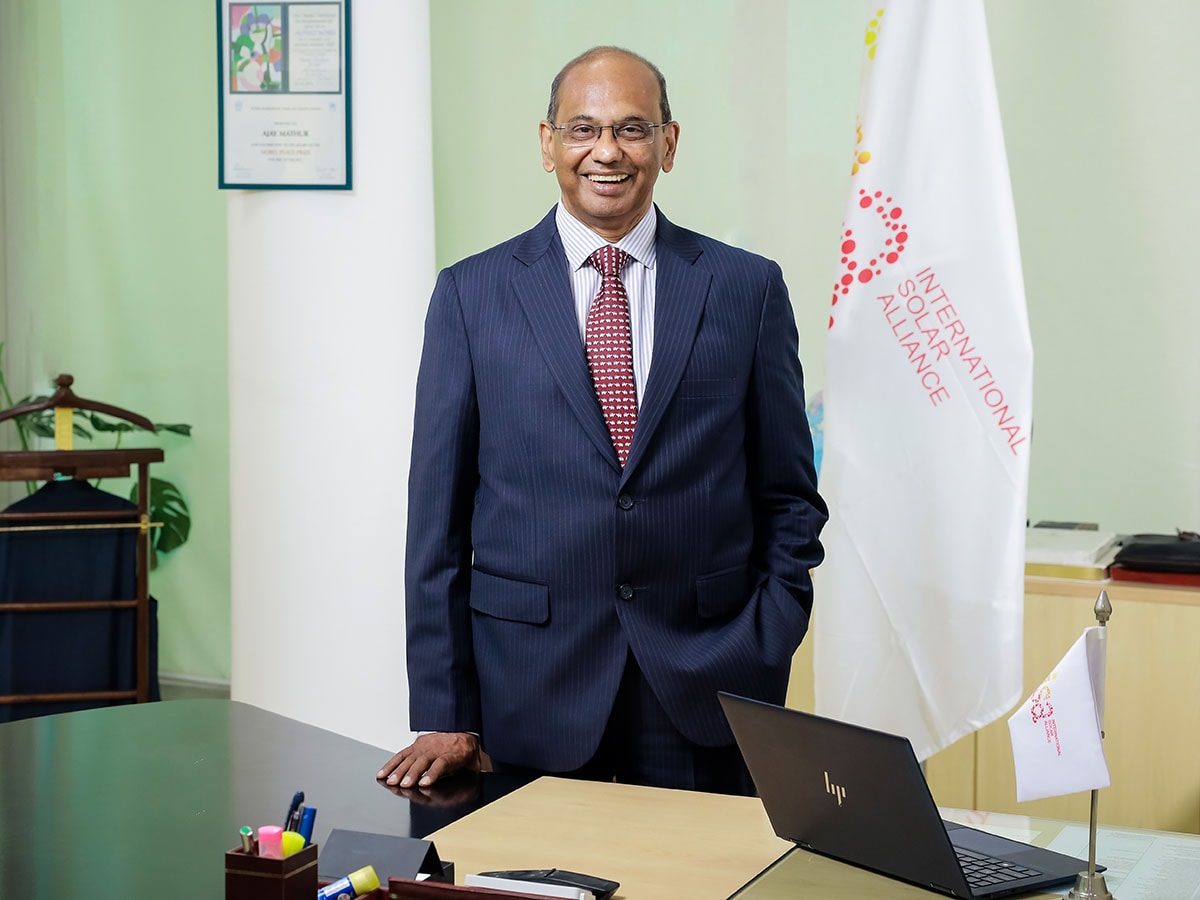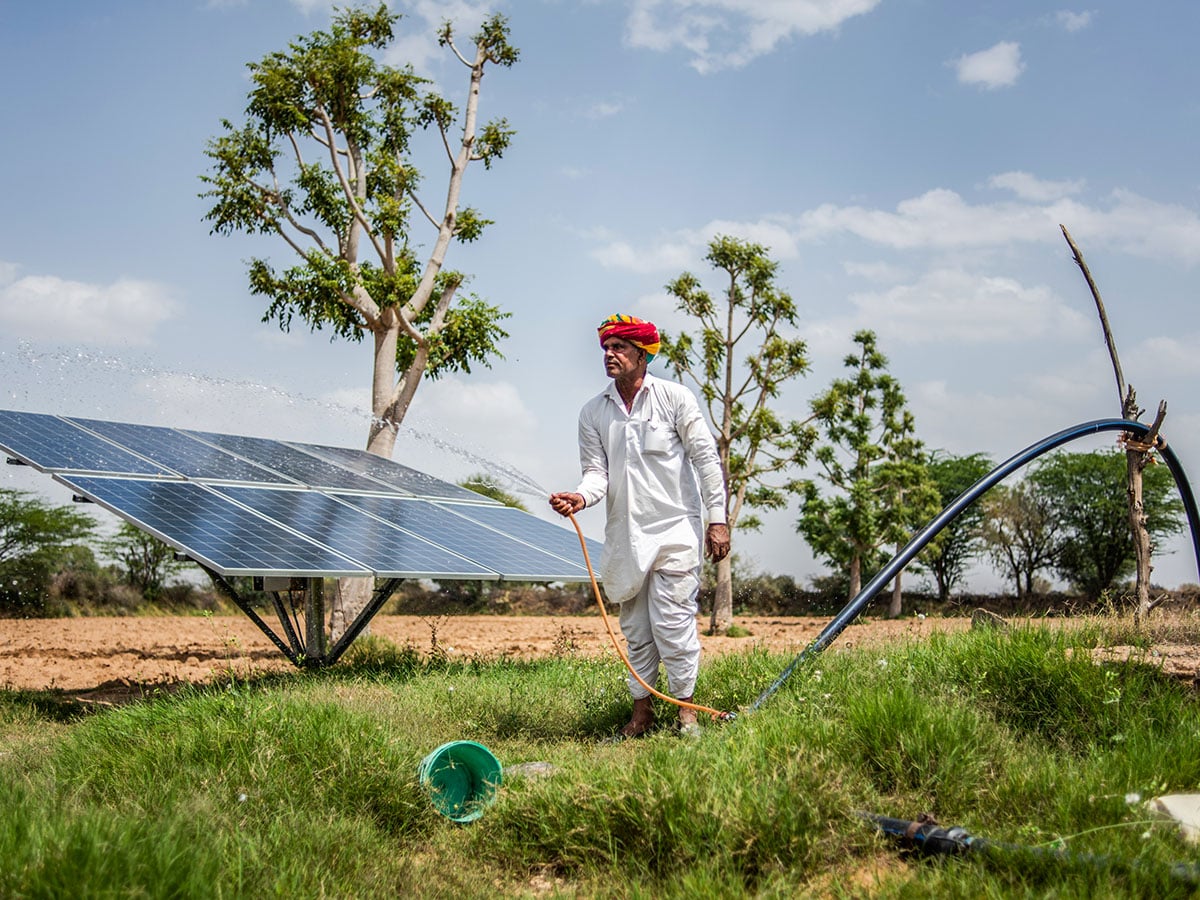 Ajay Mathur, director-general of ISA
Ajay Mathur, director-general of ISA
The International Solar Alliance (ISA) is a global intergovernmental organisation that works to accelerate the efficient use of solar energy to combat climate change and reduce reliance on fossil fuels. It has its headquarters in India and comprises over 120 member countries, including France, the UK, UAE, Japan, Singapore, Sweden and New Zealand.
The ISA is hosting a four-day session, in its seventh edition, in Delhi starting November 3, in which member countries will deliberate on a range of issues, including speeding up solar deployment, energy access, technology sharing, security and mobilising finance.
Ajay Mathur, director-general of ISA, speaks with Forbes India about bridging gaps in solar energy access, how India can capitalise on opportunities in solar power, and handholding startups working in this space. Edited excerpts:
Q. The ISA is a global organisation headquartered in India and engaged in climate advocacy focussed on solar. Why is that important?
The experiences that India has had, both in policy and implementation, are of relevance to a large number of countries where solar is yet to be developed. Around 74 percent of the investment in solar last year was in the OCED countries [Organisation for Economic Co-operation and Development countries include 38 member countries across the US, Europe and Asia-Pacific] and China. For them, the energy demand per person is more or less constant, which means you can do solar during the day and use your existing fossil fuel capacity at night. However, in developing countries where the energy demand is increasing, tomorrow you will need more electricity during the day when solar is available as well as in the night when solar is not available. However, setting up solar capacity for the day and fossil fuel capacity for the night does not make sense.
India has been successful in developing solar electricity to the point where round-the-clock, even at 4 in the morning, you can get renewable electricity; and you are getting this at prices that are now competitive with the new coal-based power stations.
Second, for all countries in the world, including the developed countries, there is a huge amount of knowledge. We are all starting this off. For example, how do you geographically diversify the manufacturing? How do you provide universal electricity access using solar? Is it cheaper than extending the grid? The ISA is better-positioned to answer those kinds of questions than any other organisation.
Q. There are solar-rich countries and there are nations that have little or no access to this energy. How do you bridge the gap?
The private sector has invested a huge amount of resources in solar energy in the past few years. In 2023, it was about $500 billion, which led to adding about 450 gigawatts (GW) of solar capacity. But, as I said earlier, around 74 percent of it was in the OECD countries and China, another 10 percent in India, Brazil, and a few other countries.
All of Africa, which is responsible for 60 percent of the solar radiation in the world, got 3 percent. We asked investors why, and they said they were not sure of getting returns. The second thing investors said was that they would not go to Africa for one project, but for a pipeline. So, the ISA created a global solar facility (GSF, for which the ISA wants to raise $100 million this year), in which we guaranteed payments to various donor countries that were putting in money.
When a developed country or any private sector investor invests in small-scale solar in Africa—and Africa to begin with, we are still learning—we guarantee a return on investment. If not, we repay them. What we found was that there is much higher repayment of loans in Africa than in any other geography. The repayment rate was above 98 percent in Africa. It is about 94 percent in Asia, and so on. India used to face similar risk perception issues with investors not coming in. Now that is not the case anymore.
With the availability of the global solar facility, for which the government of India has agreed to provide the anchor resources, we are looking for other people to invest as well. On the other side, where will the projects come from? So, we started identifying startups. Last year, we identified 20 startups in Africa. This year, we did it in India and the Asia-Pacific.
We have 10 problem statements, across large and small solar, solar pumps, batteries, inverters, solar waste etc. We are handholding these startups for resource raising. We have had meetings with venture capitalists, and several agreements have been signed. We also work with these startups on technology cooperation, and help them in building up their brand. I’d like some of these guys to be the Amazons of tomorrow, providing solar goods and services across Africa and possibly beyond them.
Also read: India must make radical choices for a just energy transition, says S&P Global report
Q. Which are some of the solar startups that you have identified in India?
We have identified 10 startups in India. These range from people who have technologies to revive batteries, technologies that can clean solar panels—automatically or manually—to new technologies for solarising health facilities. We made it a requirement that they have to be at the most six years old, and must have a positive cash flow for at least the last three years. Therefore, they have a technology that you and I are willing to pay for, and a business model through which they are providing services. Therefore, they are prime candidates for raising the level of services that we can provide.
Q. What are the opportunities in solar power that India can capitalise on, and what are the roadblocks?
Opportunities are there in every state. One of the problems is that the return on agriculture is relatively limited. As a result, many farm labourers are moving to urban areas. If you design it well, their land can be made available for solar plants. This way, they get an income every year and are available to work on the plants. We also have a concept called agrovoltaics, where you do agriculture on the ground, and you have photovoltaics up. So, the farmer gets two revenue streams. One from agricultural sales, and the other from the sale of electricity of the solar panels. Whether the agriculture yield will be the same or somewhat lower, how will you make a connection to the grid… all these issues are being addressed right now. There are models for agricultural land and solar to coexist without the kind of problems that we have seen elsewhere.
 Indian farmer, cleans solar panels on his land, used to power a water pump and irrigation system for crops, in Solawata, Rajasthan, India. Image: Rebecca Conway/Getty Images
Indian farmer, cleans solar panels on his land, used to power a water pump and irrigation system for crops, in Solawata, Rajasthan, India. Image: Rebecca Conway/Getty Images
Q. Solar is a huge part of India’s target to develop 500 GW of non-fossil-fuel capacity by 2030, and in the 2070 net-zero target. How can we build capacities faster? Are there strategies or best practices from around the world that we can use?
The first problem is the supply of solar panels. Around 75 percent of the panels, and 95 percent of the upstream wafers for the solar cell that form the panels, come from China, from one country. That has reduced the price of solar in the market, but the problem is that concentration in one country means that supply chains have possibly reached their choke. For example, right now, we have two to three months of the year, when no solar panels are available.
As we look at 2030, we are looking at a three-times increase in solar capacity, or it could even be eight times higher with solar hydrogen and [electric] car charging coming in. Then we are looking for geographical diversity, which means we move the production of solar panels. You can import solar cells and make solar panels. There’s local value added, it’s cost effective, and it can be used almost anywhere in volumes. We are seeing this happen in various countries.
The second is making solar cells. For cells to be competitive, they need incentives. You have the Inflation Reduction Act in the US, and proposed incentives in India. The goal is to have national capacity to produce, and have geographically diversified capacity to produce, which helps in broad-basing the production of solar cells.
On the other side is solar waste management. Many solar panels will ultimately go into the waste market; we do not want them to end in landfills. We can recycle them to meet new solar panels that are made. But remember that the solar technology of 25 years ago is different from the solar technology of today, and the technology 25 years hence will be different from today. So, preparing a recycling plan based on solar technology of today does not make sense. We are therefore looking at being able to separate the various materials that would make the solar cell. This means that the solar cells made today have to be dismantelable. We are working with ISO [International Organization for Standardization] and the IEC [International Electrotechnical Commission] to make sure those are in place for new solar cells. At the same time, you need to collect waste and bring it to places where recycling can be done. So, the production and waste management of cells are areas that are work in progress.
Q. You are the outgoing director-general of the ISA; your term ends in March 2025. What would you like to be remembered for?
I would like to be remembered as the person who was able to provide some degree of direction for the globalisation of solar energies.
